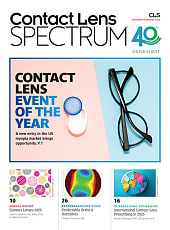Buying Time
By Susan P. Tarrant
Deciding to add an in-house lab is the first of many choices ahead. The next step is selecting your equipment. While pinpointing the most effective pieces, you'll also have to settle on practical details, such as new versus used equipment and buying versus leasing.
Here, we provide thinking points to help you make your decision.
NEW OR USED?
It may be tempting to save money by buying a previously owned edger instead of one fresh off the line. You may get lucky with a good one that serves your needs and performs well.
Bret Davis, president of Briot-Weco USA, suggests the following considerations.
CAPABILITY: Used edgers might not be designed to handle ALL of today's lens materials and trends, causing those jobs to be sent to the lab.
WARRANTY: Even overhauled machines can contain used parts, increasing the risk of breakdowns. Parts and service availability are less available for older machines, and warranties typically don't last more than 60 to 90 days.
MACHINE HISTORY: The previous owner got rid of the machine for a reason. Make sure you don't inherit problems.
PRICE: Even with initial savings, used edgers typically result in higher maintenance costs.
BUY OR LEASE?
Once the decision is made to opt for a new edging system, the next question many ECPs grapple with is whether to lease the equipment or buy it outright. The correct answer depends on the practice's situation and needs.
LEASE
There is usually no down payment required.
Monthly lease bills are absorbed by keeping edging jobs in-house. Edgers pay for themselves.
It conserves working capital.
"Lease-to-buy" plans allow ECPs to own equipment (although balloon payment may be required). One-time capital tax deduction is allowed with this type of lease.
"Technology upgrade lease" plans allow upgrades to latest technology before terms of lease are up.
Tax benefits. Each lease payment can be written off.
BUY
One-time capital purchase de-duction allowed under Tax Code 179.
Equipment is owned outright.
Prefers to pay cash or take traditional bank loan (may require a down payment).



